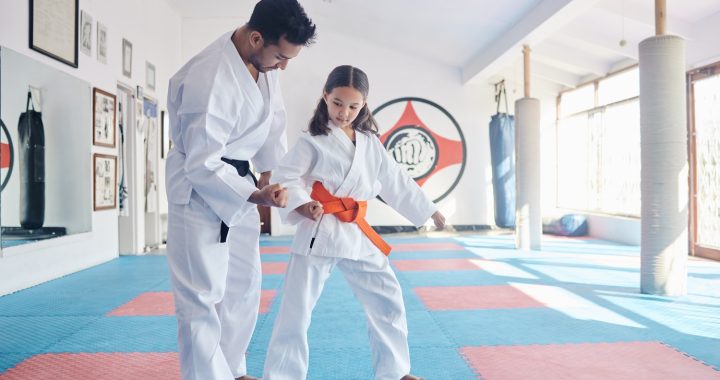
Taekwondo Vs. Karate: What is The Difference?
Welcome from the exciting world of martial arts, where tradition, skill, and discipline all come together. There are many other routes one can take, but two prominent styles, Taekwondo and Karate, draw practitioners with their methods and ideologies. We’ll examine the fascinating differences between Taekwondo and Karate in this investigation, revealing the subtleties that make these two martial systems unique. Learn the important differences that set each art apart for individuals pursuing the path of martial greatness, from their historical origins to the subtleties in training techniques and philosophical underpinnings.
Historical Background
The different narratives derived from the historical roots of Taekwondo and Karate capture the spirit of their origins and evolution.
A. Origins of Taekwondo
The ancient Korean and Chinese martial arts are the source of Korean martial arts like taekwondo. Because of this special composition, a discipline has emerged that prioritizes explosive kicks and fluid movements.
B. Origins of Karate
The Japanese martial art of karate originated from the fusion of Chinese and indigenous Okinawan combat systems. Karate is a discipline renowned for its balanced approach to strikes, kicks, and punches as a result of these traditions coming together.
Philosophical Differences
A. Taekwondo Philosophy
The core principle of taekwondo is its strong emphasis on kicking techniques. Taekwondo practitioners refine their skills with an emphasis on high-flying kicks and Olympic-style sparring. Taekwondo is known for its quick and forceful motions. According to this theory, the legs are the main weapon for both offense and defense.
B. Karate Philosophy
Karate adopts a more balanced strategy by including punches, kicks, and strikes in its arsenal. Karate emphasizes precise and regulated motions, with different forms and styles, called katas, signifying distinct conceptual frameworks.
Techniques and Movements
A. Taekwondo Techniques
Taekwondo is well known for its quick, high kicks as well as its dynamic, acrobatic moves and use of spinning and jumping kicks. Taekwondo practitioners emphasize flexibility and agility while performing moves that emphasize the art’s fast and airborne aspects.
B. Karate Techniques
A wide variety of strikes, punches, and kicks are included in karate. In Karate, hand techniques are more important, however kicks are still essential. Karate stances are often lower and more grounded, indicating a distinct method of movement and alignment.
Training Methods
A. Taekwondo Training
In taekwondo training, agility and flexibility are highly valued. To improve their talents, practitioners prepare for sparring and competitions in addition to practicing poomsae (patterns).
B. Karate Training
The main goals of karate training are strength and endurance development. The practice of kata (prearranged forms) and kumite (sparring), which stresses controlled strikes, are essential elements.
Uniforms and Belts
A. Taekwondo uniforms (dobok)
Taekwondo practitioners dress in doboks with a V-neck pattern. Taekwondo students wear color-coded belts that indicate their rank and skill levels; different colors are frequently used to represent different degrees of proficiency.
B. Karate uniforms (gi)
Known as gis, karate uniforms are different from Taekwondo doboks in that they have a wraparound pattern. Similar to Taekwondo, Karate practitioners wear belts, albeit in different styles, and schools may use different colors and a different grading system.
Popularization and Global Spread
A. Taekwondo in the Olympics
Since Taekwondo was included in the Olympic Games, its popularity has grown tremendously on a global scale. In addition to showcasing the athleticism of the art, the Games’ platform has helped to popularize it widely. Audiences throughout the world have responded favorably to the emphasis on explosive kicks and Olympic-style sparring.
B. Karate in the Olympics
Despite not entering the Olympics as early, karate has recently been added to the Games, which has generated interest worldwide. Thanks to this popularity, Karate has become more widely known and the martial arts have reignited interest around the world.
Choosing Between Taekwondo and Karate
A. Consideration of personal preferences and goals
Taekwondo vs. Karate is often a decision based on goals and personal preferences. People should evaluate whether they are more interested in hand strikes, kicking methods, or a balanced approach, and then make decisions that reflect those interests.
B. Evaluating fitness and flexibility levels
Flexibility and fitness levels must be taken into account. If someone wants to improve their agility, Taekwondo might be a better fit, whereas Karate might be more appealing to people who want to increase their strength and stamina.
C. Understanding the cultural and historical aspects
Practitioners can benefit from additional context by being aware of the cultural and historical elements of each martial art. Regardless of one’s preference toward Korean or Japanese culture, this understanding can enhance one’s martial arts practice.
Conclusion
In conclusion, the choice between Taekwondo and Karate hinges on a nuanced understanding of their differences. Although self-improvement, discipline, and respect are similar values in both martial arts, their distinctive identities are defined by important differences in techniques, origins, and philosophies. Taekwondo is distinct because it emphasizes powerful, high kicks and acrobatic moves that are derived from Korean martial arts customs. Conversely, Karate, which originated in Japan, is known for its strong punches, kicks, and variety of strikes, which are influenced by Chinese martial arts. Each discipline’s movements, postures, and competitive elements add to its tastes. The choice between Taekwondo and Karate ultimately comes down to individual tastes, objectives, and how well the martial arts ideology aligns with the practitioner’s values and aspirations.


























